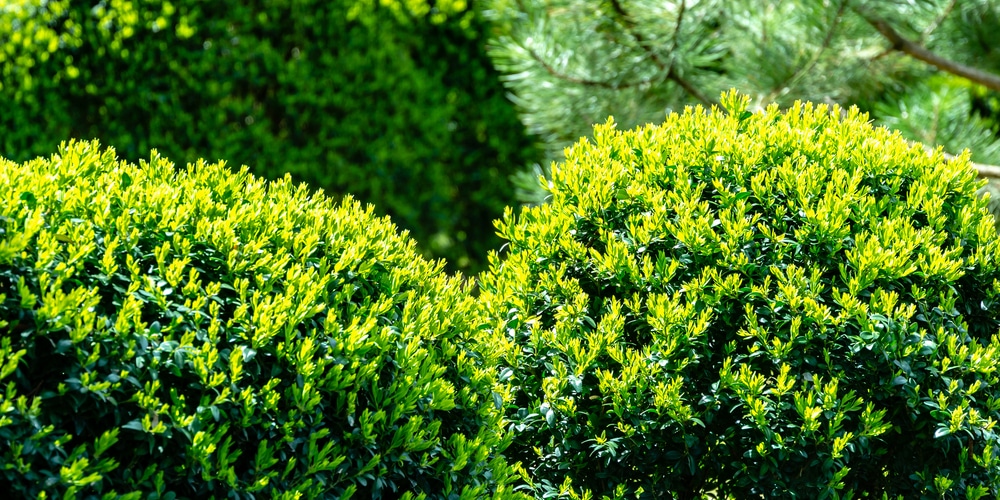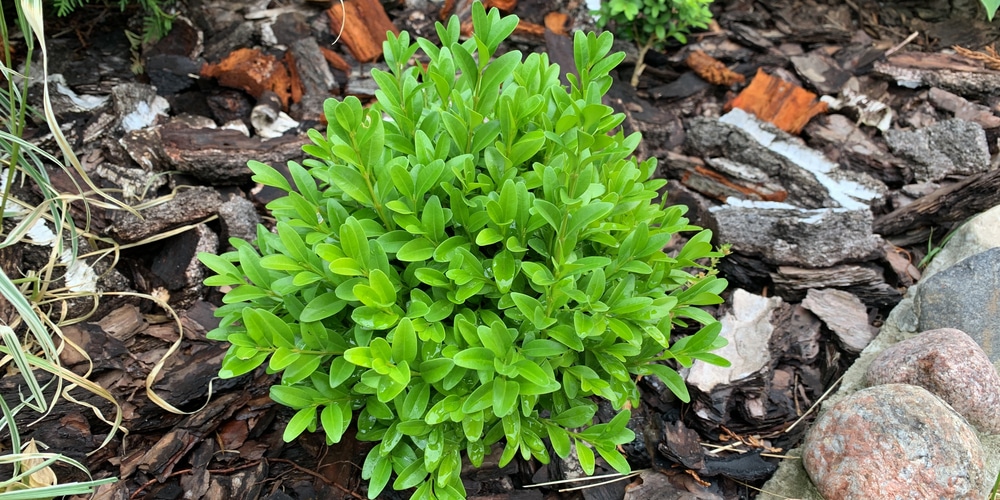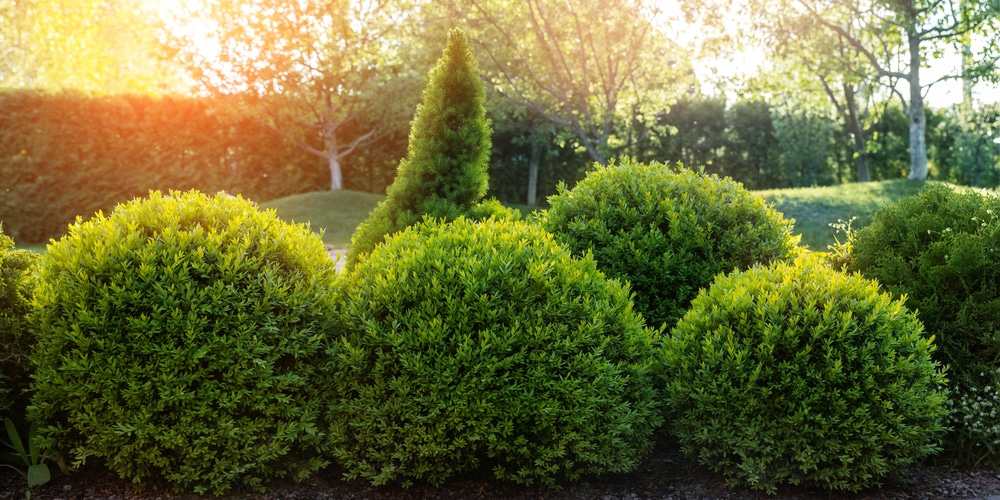You may have several boxwood shrubs you’d like to dispose of, but don’t know where to start. Naturally, you’d want to know how to remove boxwood hedges after cutting them to the base. Let’s look at how to remove boxwood hedges.
How to remove boxwood hedges

Here are four ways to remove boxwood hedges.
Cut Off the Boxwood’s Light and Nutrients
All plants need light and air to grow. When you’re cutting down boxwood hedges to a small stump you’re effectively removing how it gets light. However, the shrubs are technically still alive and may regenerate by producing new stems and foliage.
This technique is similar to covering weeds and unwanted grass on your lawn using black plastic, flattened cardboard boxes, or newspapers. It’s recommended that you use a small saw or large pruning shears to cut the hedge as close to the ground as possible, then cover what’s left with cardboard, mulch, or soil.
You can accelerate the process by pouring boiling water over the area two to three times to kill the roots. Alternatively, you can pour undiluted vinegar to eliminate the hedge roots but this might affect the surrounding plants and greenery.
This way of removing boxwood hedges is particularly useful if you don’t have specialized removal equipment and if you don’t wish to apply an herbicide. However, the process takes a bit longer so you’ll have to be patient.
Grind the Boxwood and Use a Puller
Boxwood shrubs might be one of the fastest-growing hedges around, but the truth is that they’re easier to remove than you’d believe. Although the plant’s roots seek out nutrients aggressively underground, they tend to stay near the soil surface and thus may be removed easily when the time comes.
This method requires that you use tools that you won’t normally use in everyday gardening. A pair of loppers or saw can be used to remove the hedge from top to bottom. It’s recommended that you leave a two or three-inch stump so you can grab it via a plant puller or winch. Alternatively, you can use a stump grinder in the event that you need to get rid of a long hedge.
Mechanical removal ensures that nothing stays on the ground and that the chances of a re-emergence are practically zero. You can use a small shovel to dig up stray roots as needed after the ‘cut and pull’ method.
Girdle the Boxwood Hedge
Girdling is a lesser-known method of removing shrubs such as boxwoods and similar plants. It’s a precise cutting technique that cuts the flow of nutrients to the plant’s extremities, eventually leading to death.
Locate the main trunk of the boxwood shrub, then cut a full circle around the trunk’s base to start the process. Once the conductive tissue is severed, your hedge will slowly die out and have its leaves and stems turn brown or black. After a month or two, you can easily remove the rest of the debris and install new plants on the soil.
Girdling is safe for the environment since it does not use any chemicals. Allowing the boxwood shrub to die a natural death takes longer compared to mechanical cutting and pulling of the roots. It’s even longer than covering the stump and is perhaps the least aesthetically pleasing of all boxwood hedge removal methods.
Cut Down and Apply Herbicide
Lastly, you can go out and purchase an herbicide for your boxwood plant to remove the hedge and replace it with other greenery. You won’t have to exert as much physical effort when cutting down the boxwood stumps or pulling out the roots since they will have already shrunk and died.
Concentrated or spray herbicides are available in any garden center, hardware store, or nursery. First, remove the boxwood growth as close to the ground as possible, then pour or apply the herbicide on the plants’ surface and ground. Keep a close eye on new growth and remove them as needed.
You may need to apply the herbicide several more times to remove boxwood hedges. Alternating between herbicide and pouring boiling water works as well. After a week or so there won’t be any new growth and the hedge will have completely died. At this point, you should dig up the soil and remove any stray roots before starting over.

